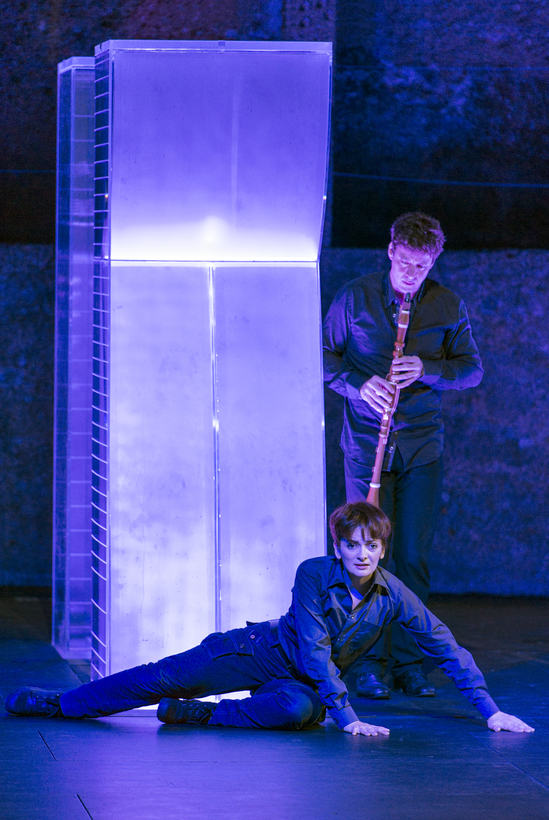In case the fancy-pants Salzburg Festival isn’t on your itinerary this summer, you might settle in at home for the flagship production from 2017. That would be Mozart’s La Clemenza di Tito as retooled by the director Peter Sellars and the conductor Teodor Currentzis—hotshot interpreters who talk like they, and they alone, own hotlines to the city’s most illustrious native son.
The opera celebrates Titus Vespanius Augustus, conqueror of Jerusalem in the year 70 of the Christian Era and for a brief time the emperor of Rome. In the latter role, he proved so popular as to earn from Suetonius, biographer of the Caesars, the sobriquet “the darling of the human race.” Yet in the shopworn libretto—some 40 other composers had set it before it was foisted on Mozart—“Tito” is the target of a murder plot, set in motion by a twitchy Roman noblewoman who hopes to claim the throne.
Written for a coronation, La Clemenza di Tito was a rush job Mozart took for the money. It premiered in Prague on September 6, 1791, at which point he had but 90 days left to live. Thankfully, time enough remained for him to complete and witness the triumph of The Magic Flute, his true operatic testament, which opened in Vienna on the 30th of that same month.

Convinced that Mozart’s heart wasn’t in much of La Clemenza di Tito, Sellars undertakes to liberate the composer’s revolutionary humanitarian ethos. To that end, he tosses out portions of the score he disapproves of and interpolates movements from the Great Mass in C Minor, K. 427, converting a paean to absolute power in the 18th century into something more like an indictment of imperialism in the 21st.
Sellars rewrites the story, too. Rather than dodge a dagger at the close of Act One, Russell Thomas’s grandly voiced, fiercely emotional Tito takes a fatal bullet that lands him in a hospital bed for the duration of Act Two, hooked up to a drip. Around him, horrified onlookers throw up their hands in prayerful semaphore. At the podium, Currentzis superintends complementary musical mannerisms: distorted tempi, dead-air pauses, long fortepiano fantasias that sound like improv from The Phantom of the Opera.
I won’t say I buy it lock, stock, and barrel, but what makes the whole package worth watching is the feverish Messianic sincerity Sellars and Currentzis ignite in their performers (even those who are miscast). As Sesto, a male character written to order for a castrato but most often performed today by a woman in trousers, the mezzo-soprano Marianne Crebassa sets the stage on fire—especially in the climatic aria “Parto, parto.” The Jezebel that Sesto loves has just made him promise to assassinate Tito, his best friend. The melodious outpouring of guilt that ensues is underscored by a bravura solo, which ordinarily emanates from the pit. Here, instead, the wind player Florian Schüle materializes from the wings, basset clarinet in hand, to join Crebassa in an ecstatic circle dance of souls. She gazes deep into his eyes as he plays, he gazes into hers, and as they near the finish line, they collapse on the floor nestled in the fetal position, still spinning out music of heavenly anguish.
La Clemenza di Tito is available for streaming on Carnegie Hall+ channel on Apple TV
Matthew Gurewitsch writes about opera and classical music for AIR MAIL. He lives in Hawaii

